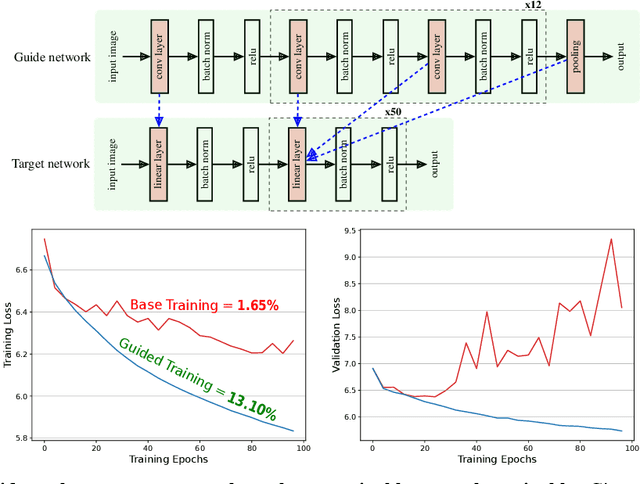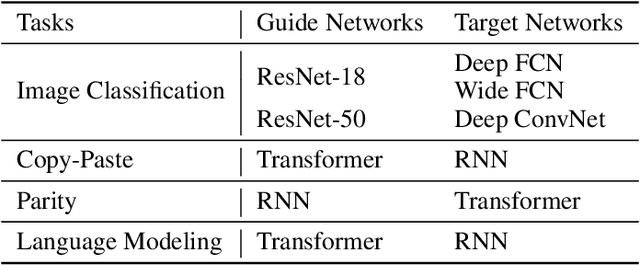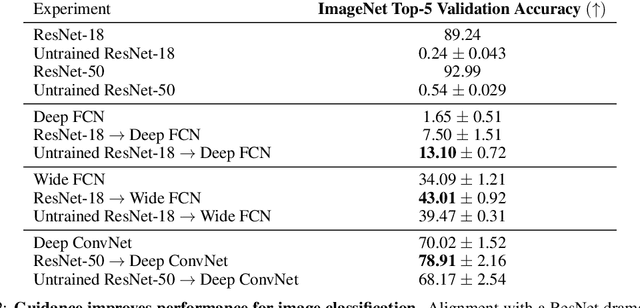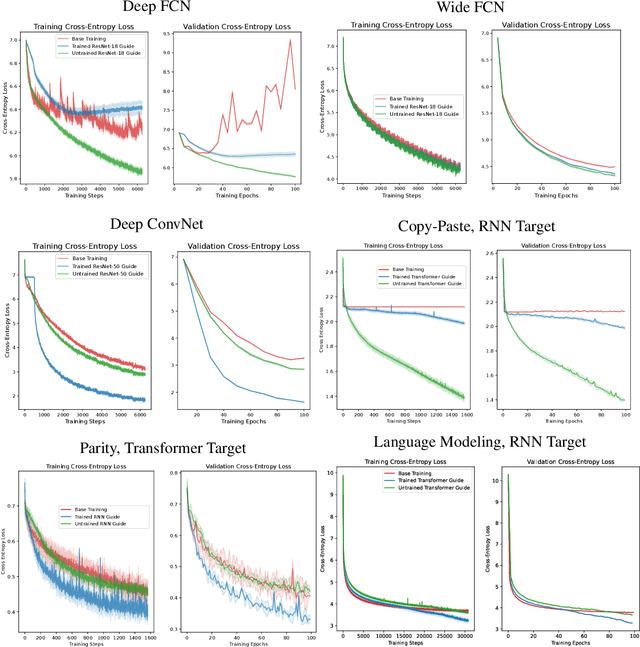Training the Untrainable: Introducing Inductive Bias via Representational Alignment
Paper and Code
Oct 26, 2024



We demonstrate that architectures which traditionally are considered to be ill-suited for a task can be trained using inductive biases from another architecture. Networks are considered untrainable when they overfit, underfit, or converge to poor results even when tuning their hyperparameters. For example, plain fully connected networks overfit on object recognition while deep convolutional networks without residual connections underfit. The traditional answer is to change the architecture to impose some inductive bias, although what that bias is remains unknown. We introduce guidance, where a guide network guides a target network using a neural distance function. The target is optimized to perform well and to match its internal representations, layer-by-layer, to those of the guide; the guide is unchanged. If the guide is trained, this transfers over part of the architectural prior and knowledge of the guide to the target. If the guide is untrained, this transfers over only part of the architectural prior of the guide. In this manner, we can investigate what kinds of priors different architectures place on untrainable networks such as fully connected networks. We demonstrate that this method overcomes the immediate overfitting of fully connected networks on vision tasks, makes plain CNNs competitive to ResNets, closes much of the gap between plain vanilla RNNs and Transformers, and can even help Transformers learn tasks which RNNs can perform more easily. We also discover evidence that better initializations of fully connected networks likely exist to avoid overfitting. Our method provides a mathematical tool to investigate priors and architectures, and in the long term, may demystify the dark art of architecture creation, even perhaps turning architectures into a continuous optimizable parameter of the network.
 Add to Chrome
Add to Chrome Add to Firefox
Add to Firefox Add to Edge
Add to Edge